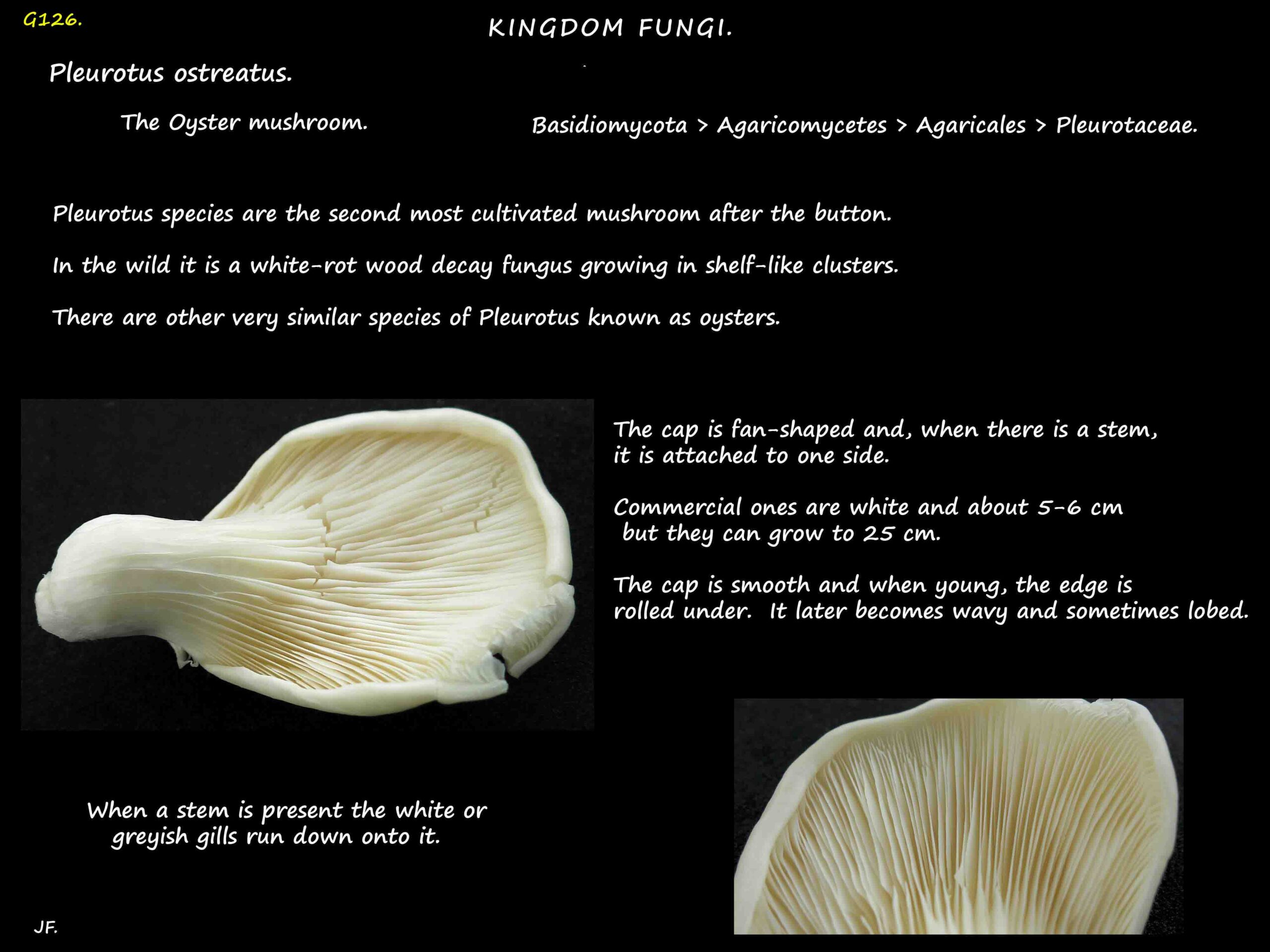The Oyster mushroom is the type species for the Pleurotus genus.
It is common in eastern Australia.
They grow on wood where they cause white rot.
Occasionally solitary they are mostly seen in small overlapping clusters on the sides of trees or logs.
Within the groups each has its own attachment to the wood.
They look like a bracket fungus with a fan-shaped or semi-circular cap.
Caps can be as small as a few cms across up to 20 (30) cm.
This varies with age, what they are growing on and if wild or cultivated.
Caps can be nearly 4 cm thick.
The convex young caps flatten as they grow.
Older caps usually have a depression near their point of attachment.
The surface is smooth with no scales or hairs.
The rolled under edge of young caps flattens out as the cap grows.
Very old caps may have a smooth, lobed or wavy edge.
The flesh is soft but may become firm and leathery in very old caps.
Younger caps are white, cream or pale brown.
With age they can become grey or a blue-grey.
Caps may be directly attached to the substrate along their flat side.
However there is usually a thick, solid, white stalk a few cms long and wide.
This may be attached to the side of the cap or under it but it is never central.
Any stalk widens at the top where it merges with the cap.
The gills under the cap are white or cream becoming darker with age.
Where there is a stalk the gills always run down onto it.
The masses of spores produced are white or a pale greyish colour.
Pleurotus ostreatus resembles the also commonly seen Omphalotus nidiformis.
The Omphalotus shows bioluminescence in the dark, Pleurotus does not.
Pleurotus australis, the Brown oyster can also be difficult to distinguish.
J.F.


